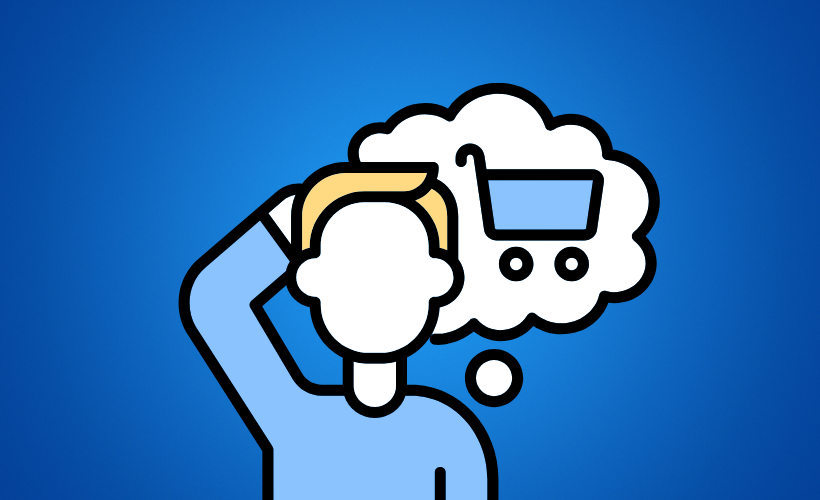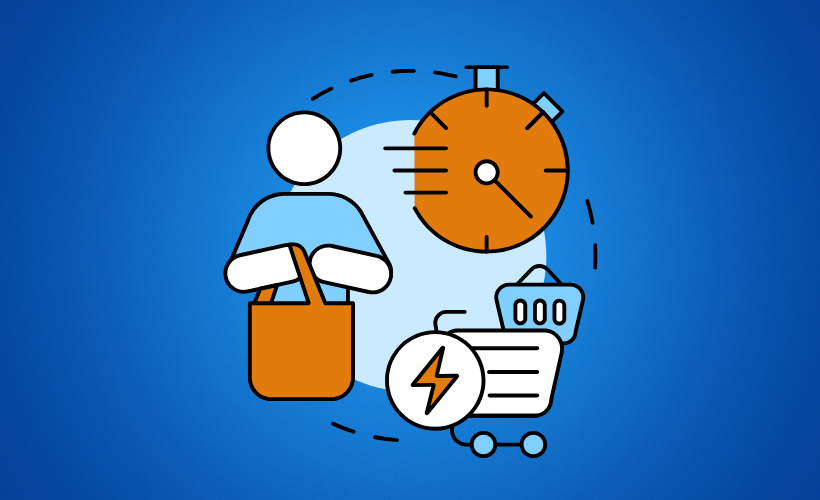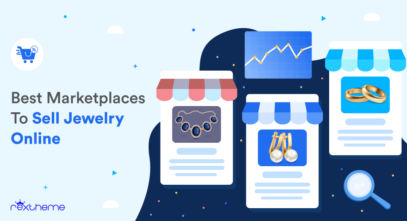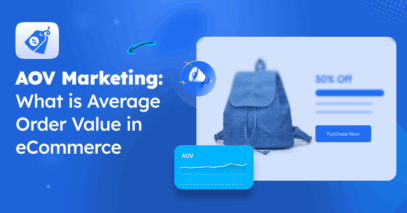I’ve seen it over and over, impulse purchases can quietly drive a big portion of your sales if you know how to trigger them the right way.
While working with different eCommerce stores, one thing has been clear: people don’t always plan to buy, but they often do when something catches them at the right moment.
According to recent data, 72% of online shoppers have made an impulse purchase because of a discount they came across.
That’s not a small number, and it shows how much potential there is when you tap into impulse purchase behavior.
Most stores miss this by focusing only on generic discounts or popups, without thinking about the emotional triggers that move people to act.
In this guide, I’ll explain the 7 stages of impulse purchase, share real examples, and show you how to activate these tactics to fit your brand and customers.
So, let’s get started,
TL;DR – How to Activate Impulse Purchase in eCommerce [2025]
- Impulse purchases happen when shoppers buy without planning, driven by emotional triggers like urgency, excitement, and fear of missing out (FOMO).
- 49% of customers visited online retail and made an impulse purchase by buying a product they hadn’t originally intended to buy
- Impulse buying works well in eCommerce due to easy access, emotional appeal, social proof, urgency, and smooth checkout.
- The 7 stages of impulse buying are:
– Trigger: Attention caught by ads, popups, or social proof
– Interest: Curiosity or excitement grows
– Desire: Emotional or perceived value increases the want
– Urgency: Scarcity or time pressure encourages action
– Decision: Quick buying decision
– Action: Add to cart or checkout
– Satisfaction: A Positive feeling reinforces future impulse buys - Proven 10 step-by-step strategies include:
– Attract visitors with trending or high-interest products
– Engage with eye-catching visuals and benefit-driven copy
– Detect shopper interest through behavior tracking
– Trigger time-limited discount popups for urgency
– Add scarcity messages like “Only 3 left!” to boost FOMO
– Offer one-click upsells and related add-ons at the cart
– Show free shipping progress to increase cart value
– Provide surprise checkout discounts to close sales
– Display trust badges and real reviews before payment
– Confirm purchase with a feel-good message post-sale - Essential tools to automate and optimize impulse purchase activation:
– Dynamic Discount (⭐ main tool) for real-time discount triggers based on shopper behavior
– Checkoutify for smart upsells during checkout
– WPFunnels for visual funnel building and upsell triggers
– OptinMonster / Poptin for timed popups and countdowns
– Nudgify for live social proof and urgency alerts
– CartHook (Shopify) for post-purchase upsells and instant discounts - Final Verdict: Use the 7 impulse stages with smart strategies and tools like Dynamic Discount to trigger real-time offers, like BOGO, time-specific, and cart-based discounts.
What is an Impulse Purchase & How Does It Work?
An impulse purchase is when your customer buys something suddenly without planning. It’s often driven by emotions rather than careful thought.
It works by catching the customer’s attention and creating feelings like excitement or urgency. These emotions push them to buy quickly before thinking too much.
For example, a customer might see a “50% off today only” deal in your store and decide to buy right away, even if they hadn’t planned to. The fear of missing out makes the offer hard to resist.
Why Impulse Purchase Works in eCommerce

Understanding why impulse purchases happen can help you create the perfect shopping experience that encourages your customers to buy quickly and confidently. Here are some reasons given below:
- Instant Gratification: Shopping online lets your customer buy anytime and get quick satisfaction. This convenience beats physical stores and makes impulse buying easy. You don’t have to wait or plan ahead.
- Eye-Catching: Attractive product displays and images catch your buyers’ eyes immediately. They spark their immediate desire and encourage emotional spending. This quick visual appeal drives impulse buys.
- Limited Offers: Time-limited deals create urgency and push your customers to act fast. These offers tap into their impulse purchase tendencies and the fear of missing out. It makes them want to grab the deal now.
- Personal Suggestions: Tailored recommendations show products they’re likely to love. You can use suggestive selling techniques to make adding impulse items to their cart feel natural and easy. It improves their overall customer experience.
- Easy Checkout: A fast and simple checkout removes barriers to buying. This smooth process supports pure impulse purchase by letting them complete purchases before second thoughts occur. It keeps the momentum going.
What are the 7 impulse Purchase cycle?
Now, I’m going to walk you through the 7 impulse purchase stages and share with example below:
- Trigger: This is the first stage of an impulse purchase. It happens when something instantly grabs the customer’s attention, like a pop-up or an eye-catching product display. For example, imagine someone is casually browsing your store and suddenly sees a bold banner for earbuds with glowing reviews. That visual trigger stops them mid-scroll and gets them curious.
- Interest: Once their attention is caught, the customer starts to feel interested in the product. Maybe they notice the earbuds have a sleek design, noise cancellation, or are trending. At this point, their emotional state begins to shift, even though they had no plan to buy, they start thinking about it.
- Desire: The customer now starts imagining how the earbuds will fit into their life, listening to music during workouts or calls on the go. When you combine that with a limited-time offer or discount, their emotional connection gets stronger, and they feel like they need it now.
- Urgency: Now you can set countdown timers or tags like “Only 3 left!” — those are classic urgency tactics. These triggers make the customer worry that they’ll miss out if they don’t act fast. That fear of missing out (FOMO) is a strong motivator, especially when the deal looks too good to pass.
- Decision: At this stage, the customer makes a quick decision to buy, often without deep thinking. The environment you’ve created, their emotional excitement, and your strategic setup lead them to take action. This is where the definition of impulse buying turns into a real choice to purchase.
- Action: After that, they add the earbuds to the cart and proceed to checkout. If your checkout process is fast and easy, it removes doubts or second thoughts. That’s how you keep the buying momentum strong and improve customer satisfaction right at the point of sale.
- Satisfaction: Finally, after completing the purchase, the customer feels good. They believe they made a smart choice, got a great product, and enjoyed a smooth experience. This positive emotion is what leads to repeat buying behavior and builds long-term brand loyalty with your store.
How to Activate Impulse Purchases in Your eCommerce Store

Now, I’m going to walk you through a simple, step-by-step process to activate impulse purchases in your eCommerce store and boost your sales effectively.
Let’s say you have a gadget eCommerce platform. Now I will explain all 10 steps according to your industry so that you can relate to all things & implement them in your actual industry.
Step 1: Attract with a High-Interest Product
Attract your customer’s attention with a gadget they didn’t plan to buy but would love. It could be the latest wireless headphones that offer great sound and style.
For example, someone browsing phone accessories might notice your new wireless headphones featured on the homepage. Their sleek design and popular brand make the customer stop and take a closer look.
This unexpected catch sparks curiosity and starts the impulse buying process, turning casual visitors into buyers.
Step 2: Engage with Visual Appeal & Copy
Once you’ve caught their attention with a high-interest product, keep them engaged with stunning visuals and clear, benefit-focused copy. Show your wireless headphones in action with bright images that highlight comfort and sound quality.
For example, use close-up shots of the headphones being worn during workouts or commuting, paired with simple text like “Experience crystal-clear sound wherever you go.” This helps customers imagine themselves enjoying the product.
Strong visuals and copy build desire and make it easier for customers to take the next step, moving them closer to an impulse purchase.
Step 3: Wait for MicroIntent (e.g., 20–30 seconds)
After engaging your visitor with visuals and copy, give them a moment—about 20 to 30 seconds—to show interest. This pause lets you see if they’re truly curious or ready to take action.
For example, if a customer scrolls through your wireless headphones’ images, clicks on details, or hovers over the “Add to Cart” button, it signals growing interest.
Waiting for these small actions helps you time your offers perfectly and boosts the chance of an impulse purchase.
Step 4: Trigger a Time-Limited Pop-Up Offer
Once you notice a customer’s interest, trigger a time-limited pop-up in the product page to create urgency and encourage action. This helps push them from thinking to buying quickly.
For example, you might show a pop-up saying, “Get 10% off wireless headphones—only for the next 10 minutes!” This taps into their fear of missing out and makes the offer feel special.
These timely pop-ups keep the impulse buying cycle moving, turning curiosity into fast purchases and boosting your sales.
Step 5: Add Scarcity on the Page
Adding scarcity on your product page creates urgency and encourages customers to act fast. Simple messages like “Only 3 left in stock” make shoppers feel they might miss out.
For example, if you show “Hot seller – 15 sold today” next to your wireless headphones, it signals popularity and limited availability. This taps into FOMO and boosts impulse buying.
Using scarcity this way makes customers more likely to decide quickly, turning interest into a purchase before the product runs out.
Step 6: Offer a Cart-Based Upsell or Add-On
After a customer adds a product to their cart, offer a related add-on to increase the order value. This makes it easy for them to buy more without extra effort.
For example, when someone adds wireless headphones, suggest a protective carrying case with a one-click add option. This simple offer feels like a helpful recommendation, not a hard sell.
Cart-based upsells like this boost sales by giving customers a quick way to enhance their purchase without interrupting their buying flow.
Step 7: Show Free Shipping Threshold Progress

Showing customers how close they are to free shipping encourages them to add more items. This motivates shoppers to increase their cart value without hesitation.
For example, a message like “You’re $8 away from free shipping” on the wireless headphones page invites customers to explore small add-ons or accessories. It gently pushes them to spend a bit more.
This simple progress indicator makes customers feel rewarded and helps turn casual buyers into higher-value shoppers.
Step 8: Trigger a Surprise Checkout Discount
At checkout, surprise your customers with a special discount to encourage them to complete their purchase. This unexpected offer feels like a reward and keeps the momentum going.
For example, use Dynamic Discount to display a message like, “You unlocked 15% off your total order!” right before payment. It gives customers one more reason to buy now.
This final incentive helps reduce cart abandonment and turns hesitant shoppers into happy buyers quickly.
Step 9: Show Trust & Reviews Before Payment
Before customers complete their purchase, build their trust by showing real reviews and trust badges. This reassures them that their order is safe and reliable.
For example, display customer ratings and badges like “Secure Checkout” or “Money-Back Guarantee” on the payment page. These signals ease worries and reduce hesitation.
Providing trust and social proof at this stage increases customer satisfaction and helps turn impulse interest into a confident purchase.
Step 10: Confirm with a Feel-Good Message
After a customer completes their purchase, reinforce their decision with a positive, feel-good message. This makes them feel happy and confident about what they bought.
For example, display a message like, “Great choice! You just saved $5 and got our best-seller. Your order is being packed!” to celebrate their purchase.
This confirmation builds customer satisfaction and encourages repeat impulse buys by leaving a lasting positive impression.
Which Tools are Helpful to Activate Impulse Purchases
To make things easier for you, I’ve listed some of the best tools that can help you activate impulse purchases at just the right moment in your eCommerce store.
- Dynamic Discount: This tool lets you automatically show personalized discounts based on customer actions, like scrolling, hovering, or staying too long on a product. It helps you trigger urgency right when interest is high. Perfect for converting hesitation into instant purchases.
- Checkoutify: Checkoutify allows you to show one-click upsells and cross-sells right in the checkout flow. For example, you can suggest a phone case or gift wrap before payment. This helps increase cart value without interrupting the buyer’s momentum.
- WPFunnels: WPFunnels makes it easy to design visual sales funnels with built-in upsells and conditional offers. It guides your customer step-by-step, making offers feel natural instead of forced. Great for boosting impulse buys with clear, targeted flows.
- OptinMonster / Poptin: These tools help you build popups that appear at the perfect time, like exit-intent or timed popups with countdowns. A flash deal after 20 seconds can push hesitant customers to buy now. It’s one of the easiest ways to tap into emotional impulse triggers.
- Nudgify: Nudgify shows live social proof like “5 people just bought this” or “Only 3 left!” to build urgency and trust. These alerts work silently in the background but push the emotional state toward quick decisions. Ideal for reinforcing impulse buying tendencies.
- CartHook (for Shopify): With CartHook, you can offer post-purchase upsells right after the customer checks out. For instance, show a matching item or a limited-time discount before order confirmation. It helps capture impulse buys even after the main sale is done.
Schlussfolgerung
Impulse purchase isn’t just luck; it happens when the right trigger meets the right emotion. And if you can control that moment, you can guide more customers to say “yes” without hesitation.
From eye-catching offers to urgency-driven popups, every small detail matters. It’s all about making the experience feel natural, quick, and rewarding for your customer.
You don’t need to overwhelm your store with complex strategies. Just focus on simple steps that tap into attention, emotion, and convenience at the right time.
If you want to automate this process without guessing, I recommend trying Dynamic Discount. It’s one of the easiest ways to trigger smart, real-time discounts based on your customer’s behavior.
** FAQs **
1. What kind of products work best for impulse buying?
- Impulse buying happens with small, low-cost items that customers don’t plan to buy. Products with eye-catching packaging or appealing displays work great. These are good impulse buying examples that catch attention fast. If it looks fun or useful, customers add it without thinking much.
2. How do I know if my impulse tactics are working?
- You’ll see increased impulse buying when customers add extra items or use discounts. Watch how they react to popups, time-limited offers, or suggestion impulse buying messages. These show you’ve caught their interest and changed their prior intention. Use simple tools to track customer behavior and sales.
3. Can impulse buying work for expensive products?
- Yes, but you need to use emotional stories and trust signals. Show benefits clearly and create urgency without pushing too hard. This helps avoid overspending worries and makes buying feel smart. The right moment or instance can make customers act fast.
4. Will too many popups annoy customers?
- They can if popups show too soon or too often. Wait until customers scroll or spend time on the page before showing offers. This stops negative emotions and keeps customers happy. Smart popups help build impulse buying habits without being pushy.
5. Can impulse tactics hurt my brand?
- Only if they feel too pushy or fake. When you give real value and good offers, customers feel excited, not forced. Showing popular impulse buys with discounts can increase trust. Done right, impulse tactics help build loyalty and happy customers.
![How to Activate Impulse Purchase in Your eCommerce Store [2025]](https://rextheme.com/wp-content/uploads/2025/06/Impulse-Purchase.webp)


